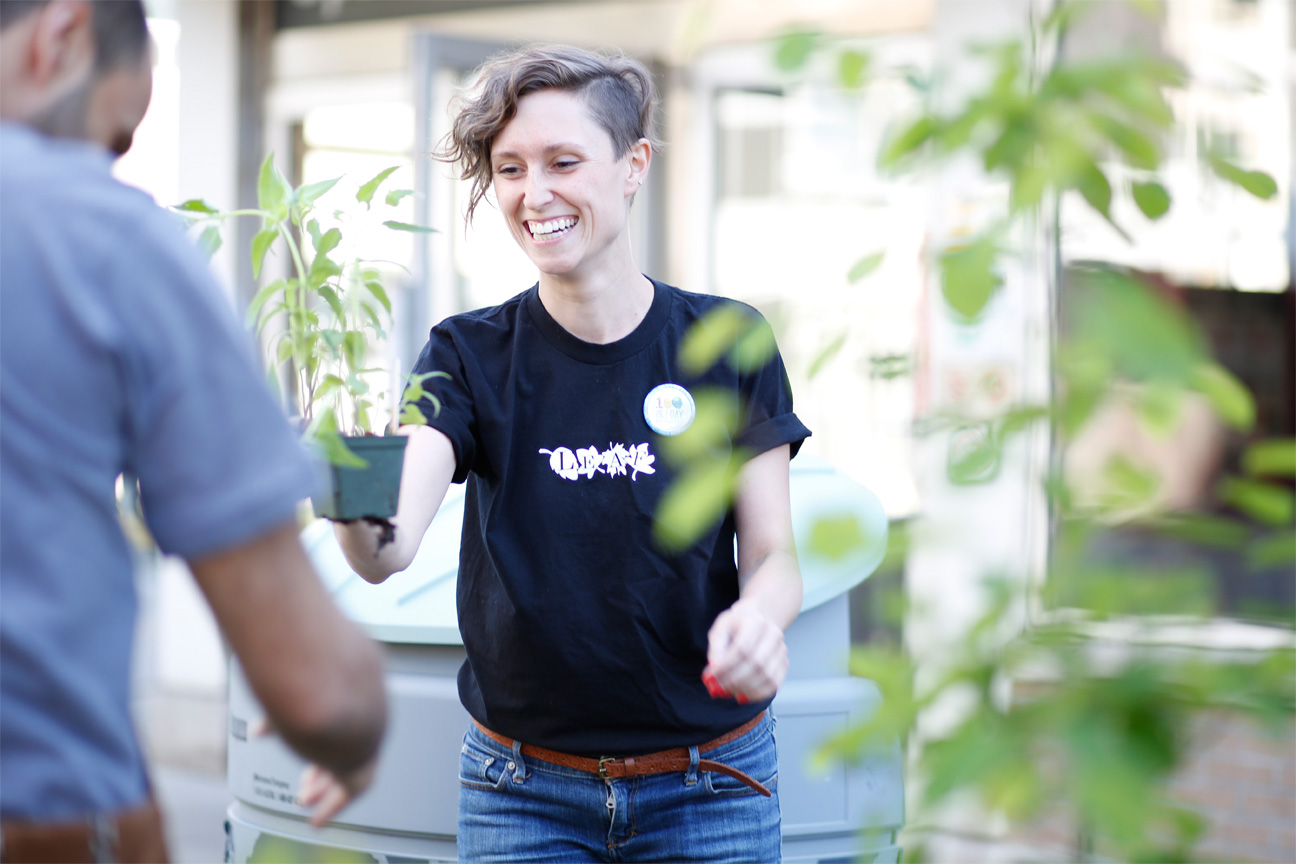
More than 20 volunteers and residents came out to a LEAF Urban Forest Demonstration Garden on June 7 to plant native species friendly to butterflies, especially the endangered monarch.
LEAF held the event as part of the 100 in 1 Day interventions, a global movement to transform cities around the world by fostering a sense of community. It was celebrated in Toronto for the first time that Saturday.
It was my first volunteer stint for LEAF and quite revealing. I joined LEAF because I love trees, but I never thought much about what’s under the canopy.
Volunteer & Stewardship Coordinator Erin MacDonald, who led the event, said we were there to increase the garden’s diversity and provide increased habitat for birds, bees and butterflies.
Each of us planted one of four butterfly-friendly native species: black-eyed Susan, New England aster, bergamot and, notably, the milkweed.

Milkweed has been decimated by pesticides. It was until recently classified as noxious in Ontario. It is the only plant on which monarch butterflies lay their eggs and is their primary food source.
“Monarchs are an indicator of how well we’re doing in North America,” Erin said. “Their loss is an indicator that we are not doing so well.”
This winter the number of monarchs overwintering in Mexico hit an all-time low, according to the David Suzuki Foundation. The Saturday planting was influenced by the Homegrown National Park and their #Got Milkweed campaign. In Toronto, the foundation is targeting a “crowd-sourced green corridor” along the former Garrison Creek in the city’s west end, an area that includes this garden.
Erin took us on a mini-tour of the narrow strip of TTC-owned land outside the Walmer Rd. exit of the Spadina subway station. It’s one of five LEAF urban forest demonstration gardens at TTC stops. Transformed three years ago by volunteers from a strip of patchy lawn, it includes two trees – the honey locust and hackberry – and a variety of native plants. They include bush honeysuckle, red osier dogwood, common ninebark, meadowsweet, serviceberry, and fragrant sumac. The demonstration gardens are supported by TTC and Ontario Power Generation.

“This garden gives a lot of joy to people,” Erin said. LEAF hopes it inspires them to install native species at home and in the community. “This is not a huge project but it’s going to have a lot of impact. It’s about spreading the word.”
Shelley McCabe, a former lepidopterist (one who studies butterflies and moths) with the Canadian Wildlife Service, now a university teacher, came to learn more about milkweed. “I have lots of butterflies in my backyard, but not monarchs,” she said. Maeve Maguire showed up to learn more about native species, of which she has scores in her garden. “I can go home and try them.”
Jerry Qian, a McMaster University MBA student, is a volunteer hoping to enhance his study of how to reverse environmental degradation. He had not previously known a great deal about the plight of the monarch butterfly. “It was an eye-opener,” he said.

Peter Small is a freelance journalist living in east Toronto. He is married, has two grown daughters, a black Labrador retriever and an ash tree he is defending from the emerald ash borer.
